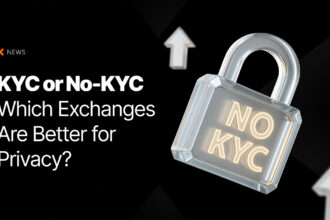When it comes to digital transactions and data security, blockchain technology has been a game-changer. In order to accomodate to the changing needs in the industry, two important concepts have emerged: Layer 1 and Layer 2. So, what are the key differences between Layer 1 vs. Layer 2? In this post, we are going to discuss this.
What is Layer 1?
Firstly, an important step of making a comparison of Layer 1 vs. Layer 2 is understanding what Layer 1 is. Layer 1 refers to the main blockchain itself. It’s the base layer where all the core activities happen. This includes the actual process of validating and recording transactions on the blockchain. Examples of Layer 1 blockchains include Bitcoin, Ethereum and Solana.
These blockchains are designed to be secure and decentralized, meaning they rely on many independent computers around the world to confirm transactions. This decentralization makes them reliable but can also slow them down because every transaction needs to be verified by multiple participants.
Layer 1 is responsible for essential tasks like storing transaction data, enforcing rules and ensuring the network remains secure and trustworthy. When you send Bitcoin or use Ethereum for smart contracts, you are interacting with Layer 1.
However, because Layer 1 blockchains do all this heavy lifting themselves, they face limitations. For instance, Bitcoin can only handle about 7 transactions per second and Ethereum’s capacity is around 15 to 30 transactions per second. During high demand, this can lead to delays and higher fees.
What is Layer 2?
Before comparing Layer 1 vs. Layer 2, we should understand what Layer 2 is as well. Layer 2 sits on top of Layer 1 and is designed to improve its speed and efficiency without compromising security. Think of it as an extra helper that takes some of the workload off the main blockchain.
Instead of recording every single transaction on Layer 1, Layer 2 solutions bundle or process many transactions off the main blockchain. After doing so, they send a summary back to Layer 1 for final confirmation and security. This approach frees up space on the base layer, allowing it to handle more users and transactions.
Some popular examples of Layer 2 solutions include the Lightning Network for Bitcoin and various rollups on Ethereum like Arbitrum and Optimism. These tools help reduce transaction times and lower fees by processing transactions more efficiently.
Key Differences Between Layer 1 vs. Layer 2
So, if we were to compare Layer 1 vs. Layer 2, what would the main difference be? The main difference between Layer 1 vs. Layer 2 lies in where and how transactions are processed. Layer 1 is the base blockchain itself. Because it handles everything directly, Layer 1 is highly secure and decentralized but can be slower and more expensive during periods of high activity.
Layer 2, on the other hand, operates on top of Layer 1 and takes over some of the transaction processing off the main chain. By doing this, Layer 2 can process many transactions quickly and at lower costs before settling the final results back on Layer 1. This makes Layer 2 solutions much faster and cheaper but still relies on the security and trust of the Layer 1 blockchain.
In short, Layer 1 prioritizes security and decentralization at the cost of speed and cost efficiency, while Layer 2 focuses on improving transaction speed and reducing fees by handling tasks off-chain but still depends on Layer 1 for security and final validation. This balance between the two is what allows many blockchain networks to grow and support more users over time. Check out ICOPAX blog for more crypto content.








